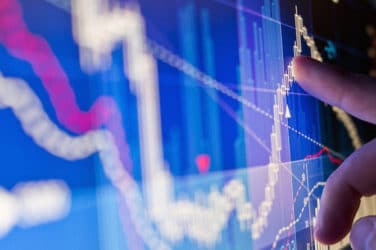

Blue Ocean ATS, which trades US stocks overnight, and the Long-Term Stock Exchange (LTSE) for companies committed to long-term value creation, both migrated to MEMX technology in 2024 in order to improve performance of their venues and make them more scalable.
Blue Ocean ATS clients can trade US National Market System stocks between 8pm ET and 4am ET from Sunday to Thursday, which allows Asian investors to buy and sell US stocks during their trading day. The ATS had launched in October 2021 and chief executive and president Brian Hyndman told Markets Media that they selected MEMX technology as their platform given that it provides the capacity to process 35 billion messages.
“We have tremendous upside,” added Hyndman. “We have had some really high notional days and high-volume days, and the system is working perfectly.”
The increased capacity is critical given the continued growth of after hours trading. More specifically after the Bank of Japan increased its benchmark interest rate last summer for only the second time since 2007 there were spikes in volumes forcing Blue Ocean to cancel trades just a few weeks ahead of the planned migration to MEMX technology.
Hyndman said Blue Ocean chose to migrate to MEMX technology because it has proven to be exchange grade as MEMX itself uses the same technology to run its equities and options exchanges. As a result, Blue Ocean can provide subscribers the reliability, stability, bandwidth and determination that they require.
The increased bandwidth also means that Blue Ocean will be able to handle increased volumes as it executes its strategy of expanding into new geographies. There are more than 60 retail brokers trading on Blue Ocean and Hyndman expects that number to continue to grow.
LTSE, a registered national securities exchange and self-regulatory organization, launched its exchange in 2020, and initially reached a maximum daily volume of about 5 million shares. After upgrading its trading infrastructure to MEMX technology in 2024, LTSE hit a daily volume of over 30 million shares in less than two weeks. MEMX said in a case study this was due the upgrade providing access to advanced order types, enhanced risk controls, and direct market data feeds.
Bill Harts, chief executive of Long-Term Stock Exchange, said in a statement: “Our partnership with MEMX and adoption of its trading technology has been crucial to enabling LTSE’s growth.”
MEMX went live for trading equities in 2020 and chief executive Jonathan Kellner said one of the guiding factors was to innovate via technology. The firm built the technology, MEMX MAP, for its exchange in-house and wanted it to be scalable, multi-asset class and able to be delivered to others. The technology was also used for MEMX’s options exchange which launched in 2023 and will support MX2, a potential second equities exchange that is awaiting regulatory approval.
Kellner said: “What we think is unique is that we use the same technology in regulated markets with high throughput and low latency that we deliver to our clients, and that is really powerful.
Another selling point, according to Kellner is that the clients who trade on MEMX’s Equities and Options exchanges on a daily basis are some of the world’s most active market participants.
“We wouldn’t be at 2.5% percent market share in equities and 3.5% market share in options if clients couldn’t manage their risk and interact effectively on our market, which says all any potential clients need to know about our technology,” he added.
MEMX was built with brand new technology and a data-centric focus, so the company and clients have the ability to continuously upgrade to the latest hardware. Building a regulated securities exchange or ATS can take years but MEMX can provide a customized, managed platform in 6 to 12 months. For example, it took MEMX six months to add digital assets for a client.
Kellner said: “We sell market-as-a-service allowing our clients to focus on what differentiates their market center with the confidence we are delivering a resilient, proven trading platform.”
This year MEMX is looking to expand its technology business outside the US and building out the pipeline as new venues wait for regulatory approval.
In 2024 the SEC approved 24X National Exchange, which ultimately plans to operate a fully automated electronic trading platform for the trading of listed NMS stocks 23 hours per day, and will be using MEMX technology. 24X said in a statement that the new exchange’s executive team placess a high priority on enhancing client experience through continuous technology innovations and improvements.
In addition to being attractive to new venues as they launch, Kellner sees potential to gain business when established platforms evaluate their technology, as they are usually on multi-year contracts. Kellner acknowledged there is a high hurdle for change due to the cost of implementing new technology, but argued that venues may need added functionality, better support, newer features or newer technology.
“We’re actively talking to established exchanges and ATSs all over the globe,” he added.









